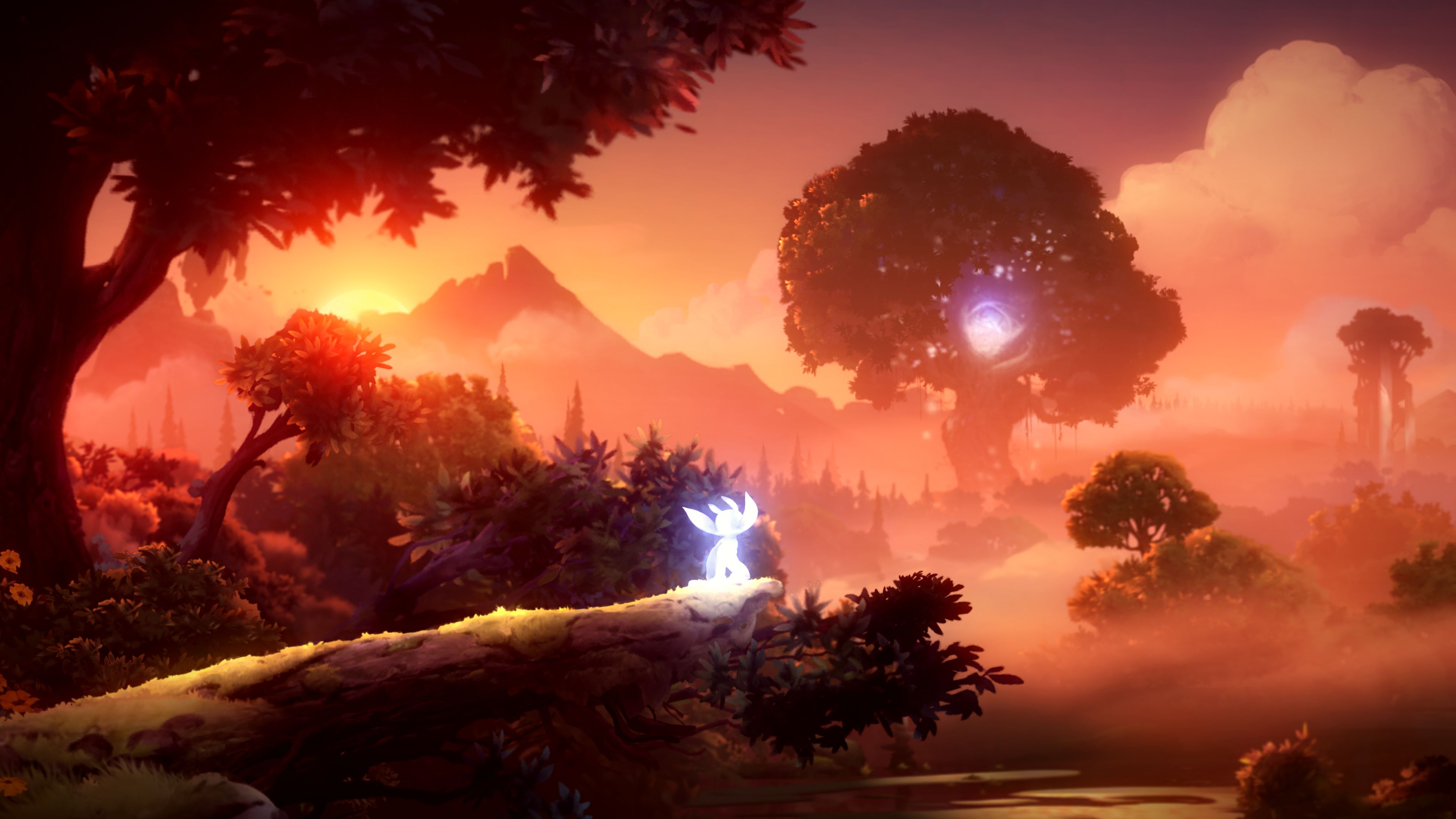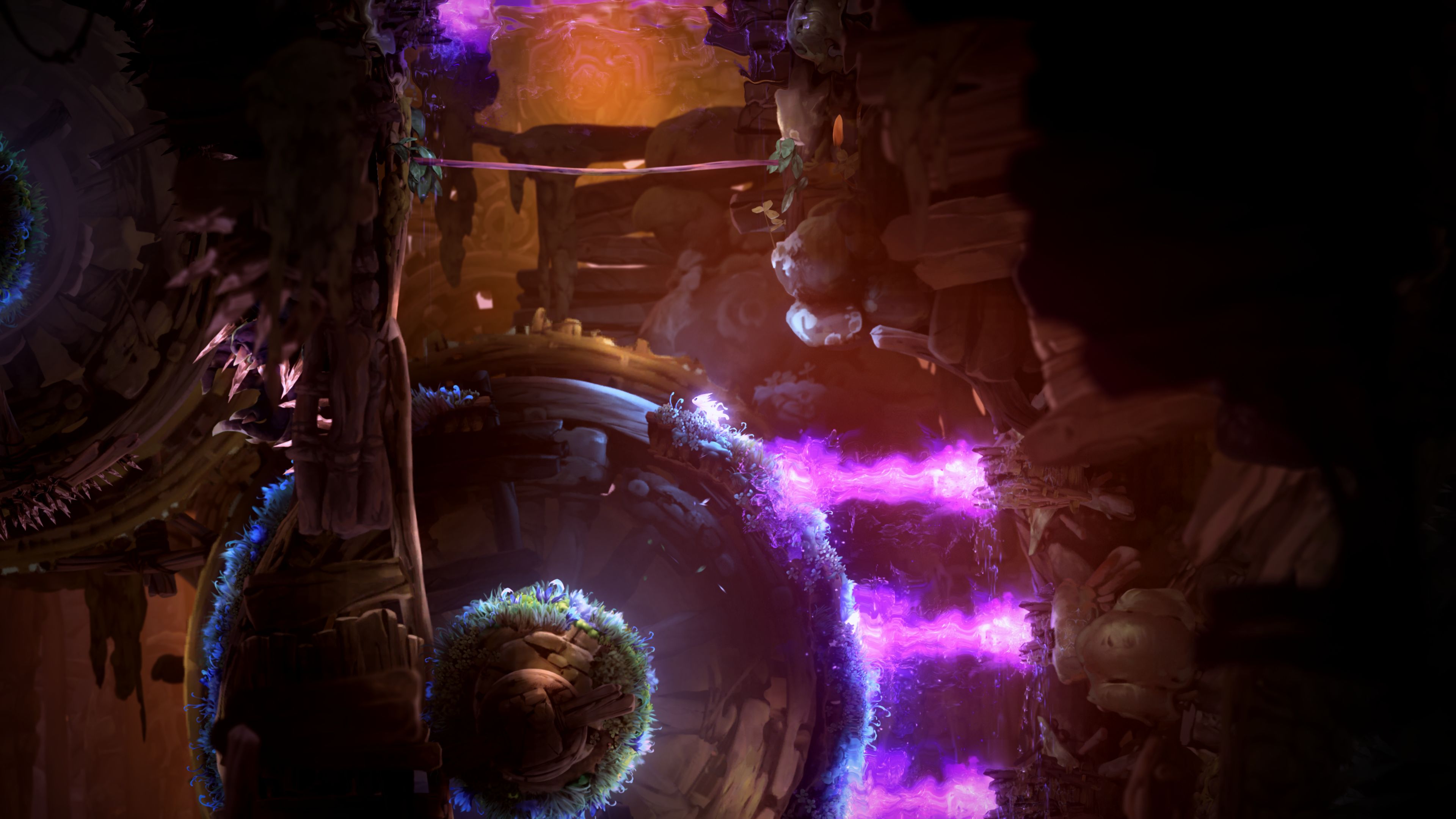Ori and the Will of the Wisps' sublime platforming sets a new bar for metroidvanias
It's a lavish, beautiful sequel, but the movement stands out above all else.
From the first five minutes, I can tell Ori and the Will of the Wisps is going to try really hard to make me cry. With some brief narration, it shows Ori and his strange family at peace, and then immediately yanks at the heartstrings as young owl Ku tries to fly with a maimed wing. This is sad, the beautiful orchestral music tells me. This is sad, say the owl's huge, expressive eyes. Like the first game, Ori and the Will of the Wisps pairs its action with broad, mournful moments that give it the quality of a dark children's story. What stuck with me longer, though, is the confidence and scale of this sequel, which I had to pry myself away from after four hours.
I played the opening hours of Ori and the Will of the Wisps at a recent preview event on a PC running at 4K and 60 fps. It's pure metroidvania, with a large, interconnected 2D world filled with power-ups that let you venture to new areas and return to old ones to find secrets. There are orbs to collect that expand your health bar and magic meter, and all the usual abilities like a double-jump and a dash to overcome new obstacles.
The two things that set Ori apart from other Metroidvania games are the movement and the presentation. Ori is half acrobat, half lightning. Moving in Hollow Knight, another Metroid-inspired game I love, usually feels very deliberate, not heavy but tightly controlled. Controlling Ori doesn't have that deliberate feel, but it doesn't feel sloppy, either. It's fast and fluid, more expressionistic. It's light years ahead of the stiff movement of old Castlevanias.
Ori is the kind of game that provides joy simply from moving an analog stick back and forth and pressing a button. The flow, from one move to another, is sublime.

There's combat in Ori, but in four hours I spent far more time running and jumping around and solving small puzzles to reach new areas. Sometimes those puzzles involved finding levers or objects that opened a path, while others were jumping challenges, with rooms full of hazards that I had to slip through with the right sequence of movement abilities. None of it is surprising—this is platforming 101—but it's fun because Ori is such a joy to control, and the challenge feels nicely balanced.
I collected far more movement abilities in those four hours than I did attacks: I gained a double jump, a dash, the ability to stick to walls, a grapple pull, and the ability to ricochet off a projectile in mid-air to change directions or jump ever-higher. It's a lot in just a few hours, but not overwhelming. Ori is clearly a big game, and wants to make use of all these movement skills to keep the platforming constantly engaging.
Even if moving through the world weren't as inherently satisfying as it is, the presentation would make me want to see every inch of it. In the way that Hollow Knight feels hand-drawn, Ori feels hand-painted, and the five years of work that went into this game are as easy to count as the rings of a tree. There's soft, glowy lighting everywhere. Tons of particles flow through the background. Everything in the environment gently sways to show it's alive.
Keep up to date with the most important stories and the best deals, as picked by the PC Gamer team.
Ori's look feels like a natural extension of the first game, but there are some key differences in other ways that set Will of the Wisps apart. The first game used an unusual save system: You could place a little save beacon to create your own checkpoint at any time, which could help you get through a tough platforming section. But it also meant that if you forgot to save or ran out of the energy you needed to put down a beacon, you'd be sent back to your last checkpoint. It was a unique idea and felt like a core part of Ori and the Blind Forest, but that's completely gone in Will of the Wisps.
Blind Forest's lavish escape setpieces are back.
The sequel does away with that ability entirely and instead autosaves for you constantly, so when you die it'll place you back on the most recent safe place you were standing. I do wonder if Ori's lost a little bit of individuality with this decision, but I do like that Will of the Wisps is willing to make significant changes. And in practice, I don't think it robs it of its challenge. If you die jumping through a tough platforming sequence, you're still going to have to do it again. The autosaving does take away the risk/reward of spending energy to place a save beacon, but crucially doesn't change the demands on your reflexes.
Will of the Wisps also ditches Ori's old basic attack, a burst of electricity, for an energy sword with a fast three-hit combo. It's punchy and feels great to swing, especially with directional attacks. The first thing I tried was jumping over enemies and swinging downward at them, and was happy to see it had a unique vertical attack for that exact situation.
Ori's arsenal seems even bigger this time around, though, so that's not the only way to play. On an Xbox controller, abilities are mapped to B/X/Y (with jump on A), and you can quickly swap these out to use the ones you want. Each ability has at least one upgrade, and there's a whole other system of "spirit shards," akin to Hollow Knight's pins, that act as modifiers. I got one that let me cling to walls, another that made me deal and receive more damage, and another that sucked in energy orbs from further away. The shards screen has room for 31 of these, and three can be equipped at a time, at least initially.

There are some other light RPG elements this time around, too, with a whole cast of characters to meet throughout the world and quite a few sidequests to take on. From what I ran into, these were all simple—go find a particular object for someone—but they make the world Ori's exploring feel lived-in and give you entertaining bits of dialogue, as well as ways to earn money to buy new attacks.
There's a wandering bird explorer and a Rafiki-esque martial arts ape who I already feel attached to thanks to their expressive character designs. This is a game that, like Hollow Knight, understands the pleasure of traveling through a new, unknown place full of dangers and reuniting with a familiar face.
Will of the Wisps follows the traditional playbook for a sequel. Like Ori and the Blind Forest, it's a bit heavy handed when it goes for the heart, but it's still impressive how well it wrings emotion from its music and character animation with little dialogue. It's bigger, and prettier, with enough changed from the first game to feel significantly new. Honestly, I just want to get back in there and do more jumping.
Ori and the Will of the Wisps is out on March 11.

Wes has been covering games and hardware for more than 10 years, first at tech sites like The Wirecutter and Tested before joining the PC Gamer team in 2014. Wes plays a little bit of everything, but he'll always jump at the chance to cover emulation and Japanese games.
When he's not obsessively optimizing and re-optimizing a tangle of conveyor belts in Satisfactory (it's really becoming a problem), he's probably playing a 20-year-old Final Fantasy or some opaque ASCII roguelike. With a focus on writing and editing features, he seeks out personal stories and in-depth histories from the corners of PC gaming and its niche communities. 50% pizza by volume (deep dish, to be specific).

